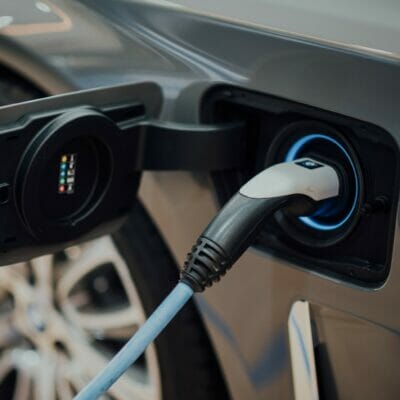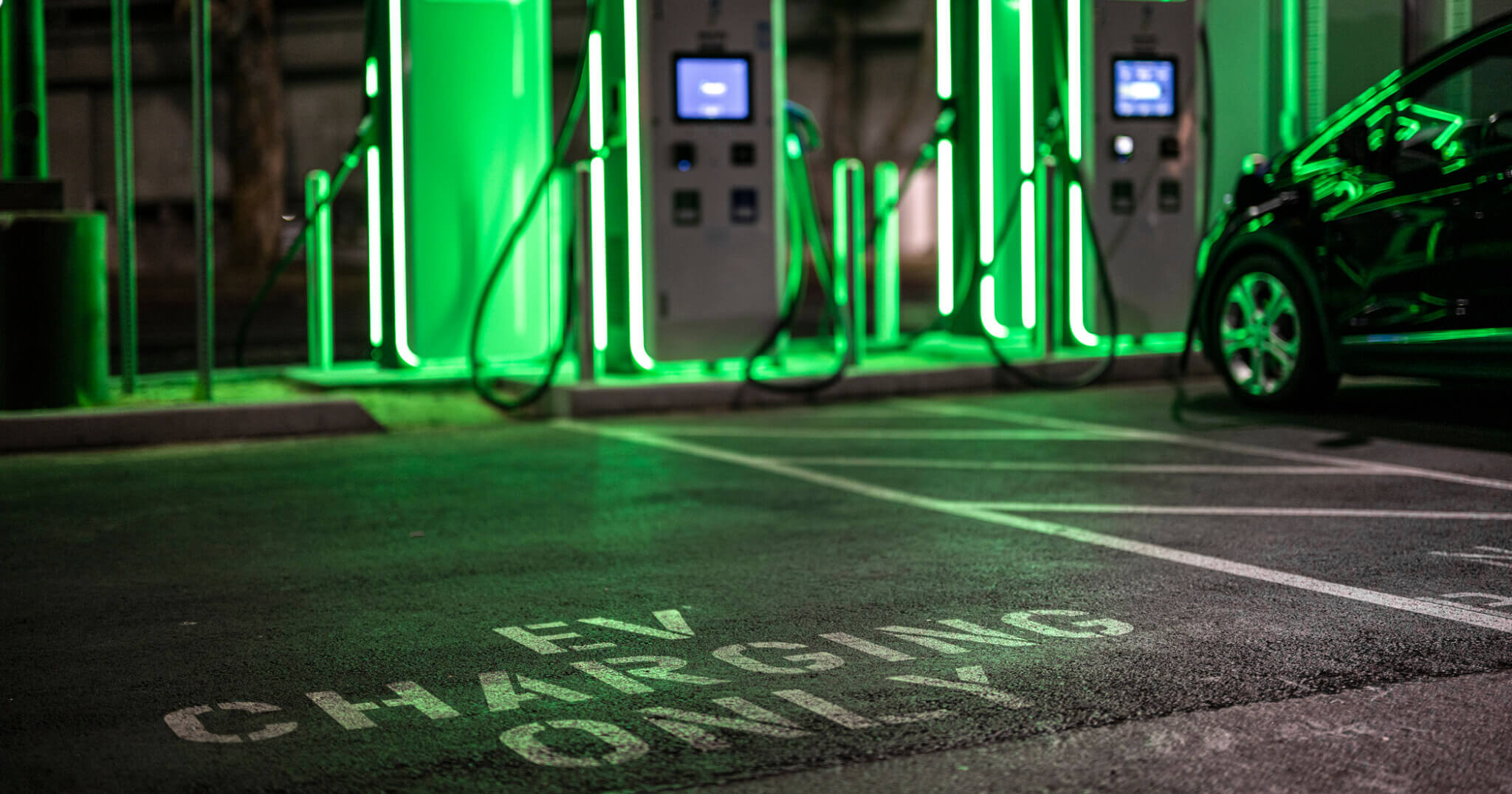- Evolving financial market conditions to force a wave of consolidation
- M&A activity has remained limited to date, despite the high influx of new players
The EU’s Sustainable and Smart Mobility Strategy targets 30 million EVs on the road by 2030, which necessitates a robust network of charging stations across the continent thus creating a business opportunity for EV charging equipment manufacturers, charge point operators, and mobility solution providers. Recently there has been a multitude of players entering the EV charging market. This surge in supply has led to an extremely fragmented market. In Germany alone, there are over 100 players operating at least 100 public EV chargers each. Despite large players such as EnBW and Tesla being active, the top 10 players have less than 20% combined market share. The high market fragmentation and expected market growth present an opportunity for market consolidation through mergers and acquisitions.
As capital is getting tighter in a high-interest rate environment and investors’ risk appetite is lowered, a wave of consolidation is likely
In the past few years, market entrants to the EV charging industry have been attracted by relatively easy access to capital across all investment stages. Not only were traditional bank interest rates at all-time lows before 2022, but venture capital, private equity and infrastructure funds see EV charging as a profitable investment in both the short and long term. Early-stage venture capital firms see EV charging as the future for decarbonized mobility, fueled by supportive policies and regulations. Growth-stage private equity firms are attracted by the double-digit growth of the EV adoption market. Finally, infrastructure funds are treating EV charging as a new infrastructure asset class, along with renewable power plants and highways. This favorable financial climate has resulted in an overcrowded EV charging market flush with cash.
Despite the high influx of new players, M&A activity has remained limited to date
Oil and gas majors and electric utilities were among the first companies to pursue some strategic acquisitions in the early stages of the EV charging market. For example, ENGIE acquired EVBox and Enel acquired eMotorWerks in 2017, and TotalEnergies acquired G2 Mobility and BP acquired Chargemaster in 2018. Shell has also been one of the most active acquirers, integrating several EV charging players into its Shell Recharge Solutions brand.
Despite the acquisitions observed, there has been relatively little activity because of elevated valuation multiples making the return on investment challenging for the acquirer. The market conditions, interest rates, and availability of financing are changing though. These new conditions are forcing valuation multipliers to decrease, thus increasing the profitability of inorganic growth via acquisitions.
Changing financial market conditions are forcing a wave of consolidation
As capital is getting tighter in a high-interest rate environment and investors’ risk appetite is lowered, a wave of consolidation is likely to happen. EV startups that relied on widely available venture capital money will now become cash-strapped, seeking additional investment and potential acquisitions. Larger players who promised investors growth over the past years will see opportunities for relatively quick inorganic growth via acquisitions. The industry has also begun to see that the current fragmentation leads to unsustainable margin erosion as each company aims to attract customers by offering lower prices. Consolidating the market and reducing the number of players will allow the remaining players to become price makers instead of price takers.
We already are beginning to see the first “forced company sales”, but this is just the beginning. Volta Charging was acquired by Shell in January 2023 for $170m, at a valuation nearly 95% below the peak valuation it obtained when listing on the public markets via SPAC in 2021. More sales will follow as players need cash. Well-capitalized companies, including electric utilities and oil and gas majors, are expected to lead the charge in grasping pockets of the market.
We expect acquirers to employ six primary M&A growth strategies
- Entering a new geography
Companies will seek to enter new geographies as we have seen from TotalEnergies acquiring Blue Charge to enter the Singaporean EV charging market and Statkraft-owned Mer purchasing a majority stake in eeMobility to enter the German EV charging market. Through these acquisitions, companies are jumpstarting their route to market, leveraging economies of scale, and creating far-reaching networks of charging infrastructure for their customers. Several US-based companies have used this strategy to enter the European market, e.g., Blink’s acquisitions of UK-based EB Charging and Belgium-based Blue Corner.
- Increasing market share in an existing segment
Companies will also seek to strengthen their market share in an existing segment by acquiring a direct competitor. In the multi-unit residential segment, Zeplug acquired its competitor Bornes Solutions to establish itself as a leader in the fast-growing market of third-party EV charging operators for homeowners’ associations in France. Doing so will likely also generate economies of scale and pricing power on component procurement, thereby improving profitability.
- Expanding into new vehicle types
While vehicle electrification has mostly focused on passenger cars in Europe and North America to date, light commercial vehicles, trucks and buses will convert to electric in major waves in the coming decades, driven by technology improvement and policy mandates such as the EU Green Deal’s proposed 2030 zero-emission target for new city buses. Companies will seek to expand their capabilities beyond passenger cars into broader vehicle types. For example, ChargePoint acquired ViriCiti to enter the electric bus segment and offer fleet management and telematics capabilities to transit agencies. Similarly, in the charging equipment manufacturing space, ABB acquired Epyon to expand its offering into DC fast charging.
- Expanding into new services while leveraging existing footprint
Companies will seek to leverage the existing footprint of a target company and expand into new services. Recent examples are BP’s acquisition of travel center operator TravelCenters of America and Berkshire Hathaway’s acquisition of truck stop chain Pilot Travel Centers. In both instances, the acquirer is planning to use the target’s existing footprint of fuel stations and deploy EV chargers across its network. Such acquisitions value the land and location of these stations nearly as much as the underlying business itself.
- Exploring new business models
Companies may also seek to diversify their revenue streams via new business models. For instance, Shell acquired Volta Charging, an operator of public charging points that generates advertising revenue from screens embedded into the charging point, adding a source of non-fuel revenue from sites.
- Integrating along the value chain
Finally, companies may seek to integrate upstream or downstream along the value chain in order to better control their sales and execution channels. Instead of relying on external partners to install, operate and maintain EV chargers, facility management player Proxiserve acquired ZEborne, a turnkey solution provider of EV chargers for consumers and businesses. This integration along the EV charging value chain further positions Proxiserve as the one-stop-shop for a building or home’s energy management needs.
To succeed with any of the above strategies companies will need to:
- Assess the opportunity and size the potential before deciding to enter a new market
- Identify the right target company, e.g., by using the most relevant assessment criteria for the acquirer
- Properly assess the target company, i.e., conduct detailed technical and commercial due diligence
- Create a compelling acquisition story for the target company to find the offer attractive enough
- Execute the M&A transaction and successfully integrate the acquired company to ensure it thrives under its new ownership
As the EV market moves from its current nascent stage to a more established market, players should be ready for opportunities to arise from the market’s consolidation. Companies should devise a strategy for market growth and assess how M&A can provide a route toward expansion. By keeping in mind the above keys to success, companies can successfully recognize and capitalize on opportunities for acquisitions and other M&A activity that can lead to the growth they need to fulfill goals.
Apricum can support you in exploring EV charging opportunities. Our services include growth strategy (strategy review, business model design, new market entry), due diligence (technical and commercial), and transaction advisory (capital raise, sell-side M&A, buy-side M&A). Please reach out to Alex Metz, green mobility practice lead, to discuss further.
 Want even more insight into the global EV and EV charging market?
Want even more insight into the global EV and EV charging market?
Read: Challenges and opportunities in Saudi Arabia’s green mobility expansion



